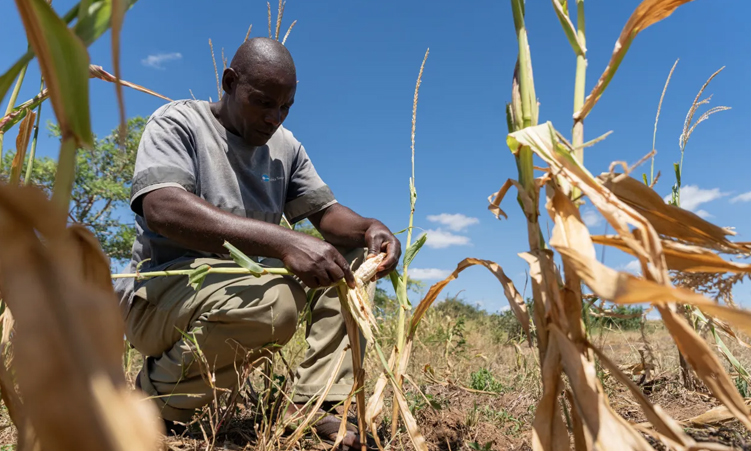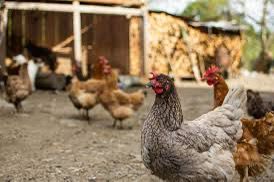Namibian farmers have incurred financial loses of up to N$315 million in the last year due to drought.
Agriculture, water and land reform minister Calle Schlettwein says the losses have been caused by drought induced crop failure for mahangu and maize.
“Figures show that the loss of dryland commercial production of mahangu was 100%, valued at N$42.3 million and the dryland white maize production loss was 48%, valued at N$273.6 million,” Schlettwein told The Namibian yesterday.
“These figures do not include losses suffered in the subsistence sector, meaning the total loss is much higher.”
According to Schlettwein, this means Namibia had to import the equivalent tonnage of mahangu and white maize from neighbouring countries – mainly South Africa.
“Fortunately there is no price difference between what producers are paid for local production and the import price, as we follow a policy of import parity pricing, with prices for local production,” Schlettwein said.
The Food and Agriculture Organisation, however, estimates crop failure to be N$300 million while livestock losses are expected to be N$21.4 million.
The impact of the drought has left Namibian farmers in the south and north of Namibia with limited options as they hope for rain.
Crop losses in the hardest-hit Zambezi region are expected to reach US$7.3 million (about N$133 million), followed by Oshana with US$3.1 (about N$56 million) million and Oshikoto at US$2.4 million (about N$44 million).
The livestock damages and losses for the Omaheke region are expected to be US$241 973 (about N$4.4 million), Zambezi at US$229 286 (about N$4.2 million) and Hardap at US$216 808 (about N$4 million).
Cornelius Zondagh, a farmer at the Stampriet area of the Hardap region, yesterday told The Namibian the current drought occurred very soon after the previous one.
“We have not yet recovered to rebuild our herd and build up a surplus for [when] we face a drought again.”

Zondagh emphasised that there is not enough money to buy feed to keep the animals alive.
“The animals are not in good condition to be able to sell and no other farmer is now buying new animals because the whole country has a drought,” he said.
Oshikoto farmer Bro-Matthew Shinguadja yesterday said due to below average rainfall, some crops failed and grazing disappeared.
“There is nothing, you can’t get grass for animals … I don’t think there is any farmer who could claim he or she has made profit,” he said.
He said the little money farmers make is ploughed back into operations.
“The stock we have, especially the animals, the quality is not good because of the conditions.
They do not get enough feed and you have to spend a lot of money buying fodder, just to supplement [the feed],” Shinguadja said.
He said farmers are stuck between watching their livestock die or auctioning livestock of poor quality.
“But now, selling at auction, you don’t get a good return because of the quality.
But it’s better than just letting them die like that.”
Shinguadja noted that one of his neighbours has lost three head of cattle due to hunger.
“If you go to the agriculture office at Omuthiya, you will find a number of people bringing in the effects of animals that died because of the drought,” Shinguadja added.
Nutrition and Food Security Alliance of Namibia director Ben Schernick yesterday said as much as research is valuable, social protection systems need to be strengthened to help the affected populations effectively.

“Which must include efficient measures such as a universal basic income grant and not a merely conditional grant.
A universal basic income grant will also have huge positive transformative effects on local economies in rural and urban areas,” he said.
Henock Shilongo, a farmer in the Omusati region, noted that the drought often drives up most of the day-to-day input costs, especially from a livestock perspective.
“In a scenario where the country receives good rainfall, one would optimise on the natural good grazing.” Shilongo said despite certain input costs being subsidised by the government, farmers are still negatively affected.
“This then leads to reduced agricultural production and reduced income for those involved in the agri-sector,” he said.
From a crop perspective, Shilongo said for farmers of rain-fed crops, drought is always bad because it means lower production, or at times no production at all for that year, which drives households to the edge of food insecurity and starvation.
“But drought is becoming the norm, so it’s a wake-up call for farmers and individual households in the agri-sector to adapt to more sustainable farming practices that reduce the further impacts of climate change effects, such as drought,” he added.
Stay informed with The Namibian – your source for credible journalism. Get in-depth reporting and opinions for
only N$85 a month. Invest in journalism, invest in democracy –
Subscribe Now!





